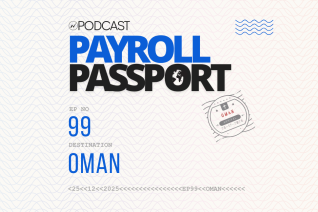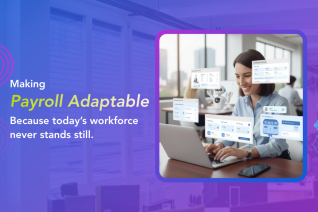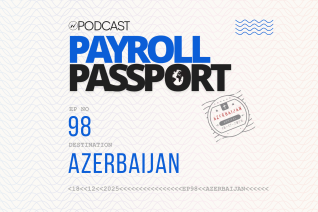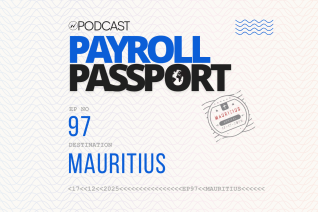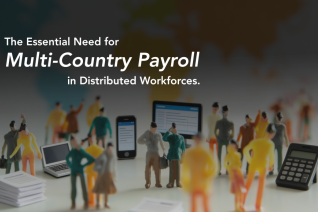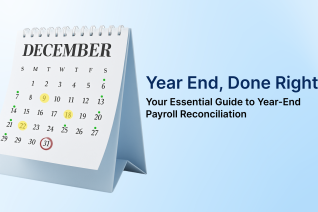Part-Time vs. Full-Time Employees: Payroll Differences Every Employer Must Know

On paper, the difference between a part-time and a full-time employee seems simple: one works fewer hours than the other.
In reality, that small distinction can trigger a ripple effect in payroll, from overtime calculations and benefits eligibility to taxes and compliance across multiple countries. Miss a detail, and you could be dealing with overpayments, underpayments, compliance headaches, and worst of all, frustrated employees.
Let’s walk through the distinctions in a way that is clear, accurate, and rooted in real payroll practice. This way, you can confidently manage both categories of employees wherever in the world your payroll operates.
Defining Full-Time and Part-Time Employees
It would be nice if “full-time” and “part-time” meant the same thing everywhere. They don’t.
Even within the United States, definitions vary. The Bureau of Labor Statistics calls 35 hours or more per week full-time, while the Affordable Care Act (ACA) sets the bar at 30 hours a week or 130 hours a month for benefits eligibility. The Fair Labor Standards Act (FLSA), surprisingly, doesn’t define the terms at all, leaving it up to employers.
Cross the border, and the rules change again:
- Australia: 38 hours a week
- France: Capped at 35 hours a week
- Germany: Typically 36 to 40 hours, depending on the industry
- India: No legal threshold, but most employers follow 8 hours a day, 5–6 days a week
The takeaway? There’s no one-size-fits-all rule. Whatever the jurisdiction, spell out in your employee handbook what “full-time” and “part-time” mean for your organization, and align those definitions with local labor laws. That clarity prevents payroll mistakes and keeps everyone on the same page.
The Pros and Cons of Full-Time Employment
Full-time employees often form the backbone of an organization. They bring consistency, deeper knowledge of your operations, and long-term commitment. This makes project planning easier and ensures training investments pay off quickly.
However, stability comes at a cost. Full-time employees usually qualify for benefits such as health insurance, paid leave, and retirement contributions, which are often mandated by law. These predictable expenses can strain budgets, especially for small businesses. If business demand drops, adjusting their hours is not always simple without changing their employment terms.
The Pros and Cons of Part-Time Employment
Part-time employees offer one thing every business values: flexibility. They are ideal for handling peak periods, seasonal demands, or specialized work that does not require a full-time schedule. Since many part-timers do not qualify for full benefits, they can also help reduce payroll costs.
The trade-off is that part-timers may have limited availability, especially if they are balancing multiple jobs. Turnover is often higher, and training can become repetitive if you are frequently replacing staff. Coordinating part-time schedules with full-time teams can also be a challenge for HR and payroll.
ALSO READ | On-Demand Pay Explained: What It Is and How It Works
Breaking down Payroll Challenges with Part-Time Roles
Managing payroll for part-time employees is not “half the work” of managing payroll for full-timers. In many cases, it is more complex. Here’s why:
1. Variable Hours and Overtime Triggers
A common misconception is that part-time employees cannot qualify for overtime. In reality, many countries calculate overtime based on daily or weekly thresholds, not job title. For example, working more than 8 hours in a single day might trigger overtime even for a part-timer. Without an automated payroll system capable of rule-based overtime calculations, extra hours can easily go unpaid until manual checks catch the issue.
2. Pro-Rated Entitlements: Holiday Pay and Leave
In most regions, statutory entitlements like vacation or sick leave must be prorated according to hours worked. For example, a part-time employee working 60 percent of full-time hours generally receives 60 percent of the statutory leave allowance. If your payroll system cannot manage accruals based on actual or average hours, errors and compliance problems are almost inevitable.
3. Tax Withholdings and Social Contributions
Part-time status does not simplify taxation. Employers must still withhold income taxes and pay statutory contributions, just as they would for full-timers. Things get tricky when an employee holds multiple part-time jobs. Without the ability to track combined income and apply the right tax brackets, payroll errors become likely.
4. Global Definitions and Thresholds
What counts as “part-time” can vary widely by country. The ACA in the US defines full-time as 30 or more hours per week, but other nations use different thresholds or base the classification on benefits eligibility instead of hours. A good approach is to set a global policy framework and add country-specific annexes that reflect local legal requirements.
What Employers Get Wrong and How to Avoid It
- Assuming part-time means no overtime - Overtime rules often depend on hours worked, not the job title.
- Manually pro-rating leave - Increases the risk of miscalculations, especially with fluctuating schedules.
- Ignoring multi-job tax implications - Leads to incorrect withholding and potential compliance issues.
- Using the same policy across countries - Overlooks statutory differences and invites costly mistakes.
Handling the Challenges of Part-Time Payroll
Successfully managing part-time payroll requires close coordination between HR, payroll, and compliance teams. Key steps include:
- Tracking variable hours with precision.
- Applying the correct pay rates, taxes, and entitlements based on local laws.
- Auditing payroll data regularly to catch issues early.
- Clearly communicating pay structures, benefits eligibility, and scheduling expectations to employees.
Misclassifying employees or miscalculating their pay can lead to compliance penalties and employee dissatisfaction. Using automated time tracking, clear classification rules, and regular audits can help avoid those problems while building trust.
ALSO READ | Earned Wage Access (EWA): A Complete Guide to Improving Employee Financial Wellness
The Neeyamo Difference: Payroll Done Right, Everywhere
At Neeyamo, we know that managing payroll for part-time and full-time employees is about more than checking a classification box. It is about ensuring precision, compliance, and consistency globally. Here’s how we do it:
- Unified Global Payroll Engine: Whether an employee works 15 hours in Paris or 40 in Manila, Neeyamo’s payroll platform applies the right country-specific rules, thresholds, and benefits calculations automatically.
- Rule-Based Compliance Automation: Our compliance engine updates itself with local law changes, so overtime rates, benefits eligibility, and tax deductions are always accurate.
- Cross-Border Reporting: With built-in classification tags, you can instantly generate compliance-ready reports sorted by employee type, location, or contract.
- Scalable Accuracy: From 50 employees in one country to 5,000 across 60 or more, our platform delivers the same compliant, accurate payroll experience every time.
Getting employee classification right is not just an administrative detail. It directly impacts pay accuracy, entitlements, and compliance.
The best way forward is to:
- Align your systems and policies to handle variable hours, multi-country teams, and complex tax rules.
- Use flexible, locally accurate payroll rules that adapt to changing regulations.
- Automate wherever possible to reduce errors and maintain consistency.
If your global workforce includes both part-time and full-time roles, Neeyamo can help you build a payroll process that scales, adapts, and earns employee trust. Reach out to us at irene.jones@neeyamo.com to explore a payroll experience built for today’s modern, borderless workplace.
Latest Resources
Stay informed with latest updates
If you're curious and have a thirst for knowledge pertaining to the HR, payroll, and EOR universe, don't miss out on subscribing to our resources.




